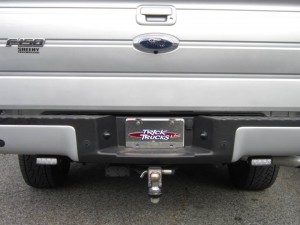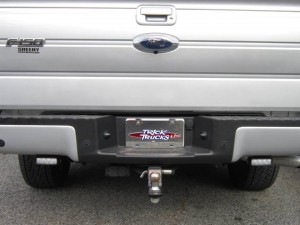Tips for Driving with a Trailer

Having the right hitch is essential when it comes to driving with a trailer.
Are you planning a road trip this fall and are going to be towing a trailer? Driving with a trailer swaying from side to side can feel spooky and, in fact, unsafe. It’s always a good idea to review some common safety practices for driving a truck or car with a trailer towed. Even the small details matter a lot when it comes to the stability of your rig. Here are a few simple guidelines to help drive with a trailer.
Have the Right Gear
Not all hitches are created equal. Your vehicle’s manual will specify how much weight your vehicle can tow. You will want to install a hitch receiver that’s heavy-duty enough to match your vehicle’s gross trailer weight (GTW) and maximum tongue weight. It’s important to check this even if you’re only planning to tow a small trailer, as you will also need to factor in the weight of the trailer’s contents.
Trailer Safety Checklist
- Chains should serve as your hitch’s last resort. In case the tongue ever loses its grip on the ball, chains will help keep the trailer from flying off the guardrail into oncoming traffic. Cross your chains beneath the tongue, that way it’ll land on top of the crossed chains if it slips free.
- Check your trailer-wiring harness. It should feature an industry-standard plug and socket wiring and color-coding scheme that makes it easy to connect properly. Prevent corrosion by spraying the contacts with dielectric grease.
- Check the brake battery. Faulty wiring or lengthy storage can sap juice from electric brakes. Use a testlight or voltmeter to make sure the battery is in good condition. If it’s not, you’ll want to hook up an external charger.
- Insufficient tongue weight is the most common reason for swaying trailers. Tongue weight should be about 10 to 12 percent of your total trailer weight.
- Inflate tires to the trailer manufacturer’s recommended cold pressure. Properly inflated tires will run cooler and more efficiently.
- When you hook up your trailer, make sure that all the lights are working. Simply turn on parking lamps and hazard flashers to make sure everything is working correctly.
On the Road
Inspect the trailer every few hours on the road and every time you stop. Keep in mind that regardless of how tightly you cranked tie downs, road vibration can loosen them. Make sure the hitch and wiring remains properly secured. When it comes to driving with a trailer, the number one thing you can do is have patience. Make turns and back out of spaces slower than you normally would. The longer your trailer is, the longer it will take to follow your steering.
Truck Accessories from Trick Trucks
Looking to get your truck ready for your next road trip? Trick Trucks is here to help. .
